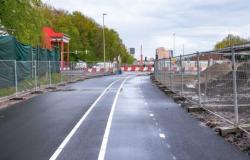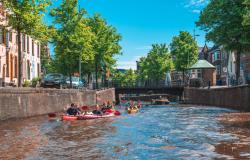In June 2006, the Ministry of Housing, Spatial Planning and the Environment and EPZ, among others, as operator of the Borssele nuclear power plant, concluded the Borssele Agreement. Borssele was allowed to remain open until 2034 under a number of conditions, including the requirement that the nuclear power plant remained among the 25% safest nuclear power plants in the EU, US and Canada. The composition of the Benchmark Committee that had to determine this was only finalized in 2008 and was also a bit like the butcher who inspects his own meat. The first benchmark did not come until five years later, in 2013, when the permit for the nuclear power plant to remain open for longer had long been issued. The third benchmark should have been released last year. But only now, just before the Easter holidays, has it been published.
The third report of the Borssele Benchmark Committee, established in 2008, should have been published no later than September 2023. That didn’t happen. Only last week, on March 28, just before the Easter holidays, did the report appear, dated November 2023. And, you wouldn’t expect it, KCB is again among the top 25%. So according to the committee. There are plenty of reasons not to attach much importance to it, but when we have time to spare we still look at it.
The Borssele Benchmark Commission (BBC) was established at the end of 2008 and, after five years of research, stated in 2013 that “[h]et ranking the safety of installations […] a difficult, if not impossible, task [is]”, and then in the same breath unanimously conclude that Borssele “convincingly belongs to the group of 25% safest water-cooled and water-moderated reactors in the EU, US and Canada”. Unfortunately, that conclusion could not be verified because the Commission “on the basis of confidentiality“had access to”Performance Indicators“.
In 2016, Laka conducted its own Benchmark of the Belgian Doel 1 and 2 reactors located on the Dutch border, using the methodology of the Borssele benchmark. It showed that both nuclear reactors are not among the 25% safest nuclear power plants in Europe, the US and Canada. If these reactors had been located in the Netherlands, they would have to be closed. Conclusion: “It is strange that the Netherlands requires the Borssele nuclear power plant to be in the top 25%, and then has no problem with Doel-1 and Doel-2 – at most mid-range in terms of safety – right on the Dutch border.”
In response to this report, Laka stated that figures from the International Atomic Energy Agency showed that Borssele scores mediocre on an important indicator for safety. And that has been the case for several years in a row. A reliable indicator of safety is the duration that a nuclear power plant is unplanned out of operation, the so-called UCL: unplanned capability loss. Figures from the IAEA show that Borssele had already been above average for a number of years in 2013. From these figures, Laka concluded that in 2012 even 177 (out of 273) reactors had a lower, safer score than the Borssele nuclear power plant on the UCL factor. “It is at least strange that the minister endorses the committee’s conclusions, while in a clear and concrete ranking by the IAEA, the Borssele nuclear power plant is certainly not doing well and is certainly not among the 25% of top reactors.”, Laka concluded then. Minister Kamp responded that the “[de BBC] the UCL factor is not a relevant factor for the benchmark [heeft] used.” But it remained unclear why the UCL factor, but other factors were, was used in the evaluation of the safety of the nuclear power plant, nor how the factors used were weighed against each other.
The second benchmark was published just before the Christmas recess in 2018. Too late because that should have been done by September 30th. Because after September 30 it was unknown whether Borssele still met that condition, GL asked parliamentary questions.
Earlier that year, Laka had litigated before the Council of State to embed the conditions of the Agreement in the permit of the Borssele nuclear power plant. The Council of State rejected this, making it clear to everyone that the Agreement and the conditions stated in it are unenforceable and therefore a waste of money.
In 2015, then Minister Kamp (EZ) had also had to admit that the CO₂ reduction agreed by EPZ in the Agreement had been far from being achieved.







